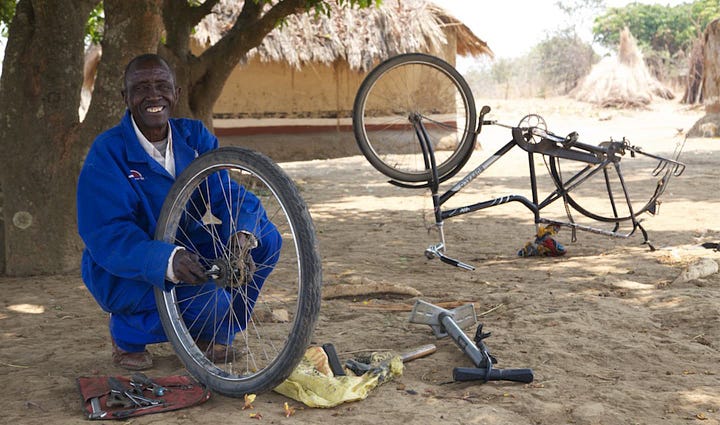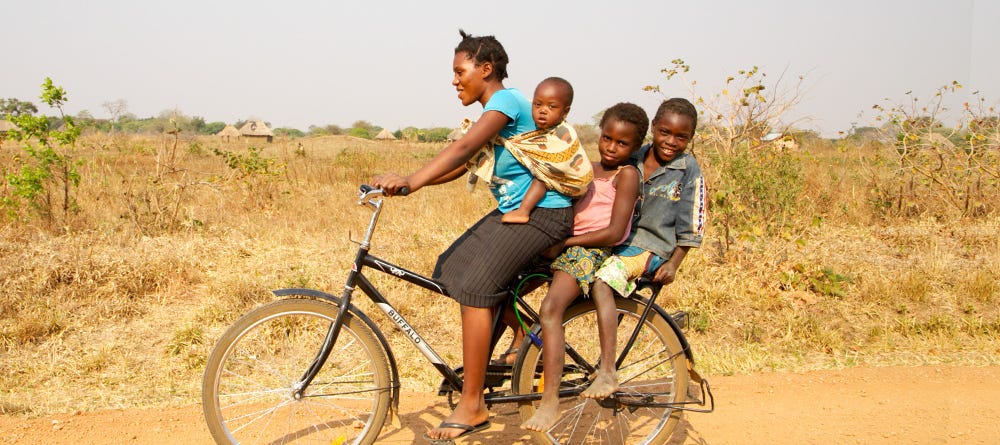If there existed the most user-centric bicycle possible, what would it look like? Well, that would depend on the user it was intended for.
Enter the Buffalo Bicycle, which is actually the most user-centric bike in existence—that is, if you live in a rural village in Zambia.
The Buffalo was developed from the ground up by World Bicycle Relief, a non-profit established in 2005. WBR has been deploying the Buffalo to the backroads of Africa and South America for nearly 20 years now. Since 2010, WBR has worked with test riders to optimize the Buffalo for these users—not for reviewers, bike shops, websites, Instagram, or racers. For users. The resulting bicycle can stay running for decades almost anywhere on the planet—even where parts and tools are in extremely limited supply.




Perhaps the most remarkable feature of the Buffalo Bicycle is its price: $165. With that, the bike must be assembled from a pile of parts—we’re talking about a pile that includes spokes. However, WBR trains and employs locals in areas where the bikes are located to assemble and maintain the Buffalo as part of an infrastructure program that includes a parts supply chain and dedicated Buffalo stores. Not only does this make it possible to keep a Buffalo running for many years, but it also creates economic opportunities surrounding the bikes. After all, there are plenty of good reasons to keep these bikes running, and none of them involve sport.
Mercy, a farmer in Kenya, increased her egg delivery from 2-5 trays to 100 trays weekly by using the Buffalo, which has greatly increased her income. Health workers can see up to 88% more patients than they could previously on foot. Moreover, school attendance and performance have improved for students like Smile in Zimbabwe, who now rides her Buffalo 4km to school instead of walking. It seems like most any bicycle could provide these benefits to a community that previously had none, but again, bicycles is useless when they’re not working.















